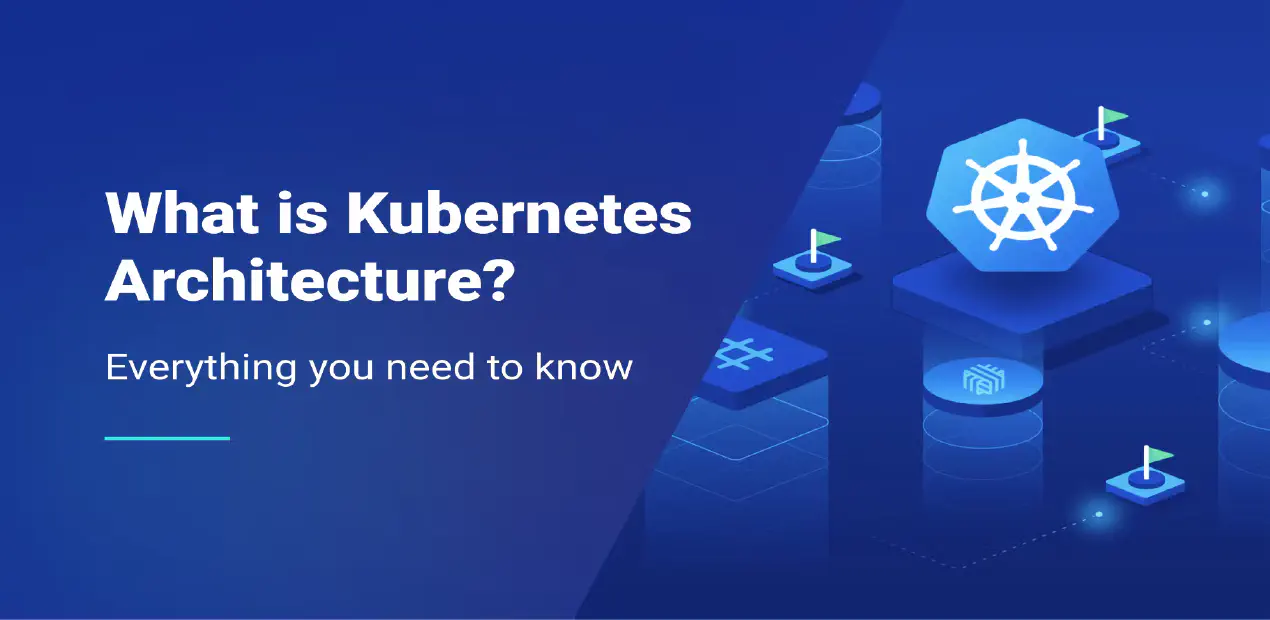Kubernetes 101: Pods, ReplicaSets, and Deployments
Posted in Devops, Kubernetes on February 3, 2025 by atharva2six ‐ 5 min read

Introduction to Kubernetes
Kubernetes is an open-source container orchestration platform that automates the deployment, scaling, and management of containerized applications. It was originally designed by Google, and is now maintained by the Cloud Native Computing Foundation (CNCF).
What is Kubernetes?
Kubernetes provides a framework for deploying and managing containerized applications across multiple hosts. It abstracts the underlying infrastructure, allowing developers to focus on writing code rather than managing infrastructure.
Key Features of Kubernetes
- Container Orchestration: Automates deployment, scaling, and management of containers.
- Declarative Configuration: Define desired application state, and Kubernetes maintains it.
- Self-healing: Automatically restarts failed containers.
- Resource Management: Efficiently allocates resources (CPU, memory) to containers.
- Scalability: Scale applications horizontally (add/remove replicas) or vertically (increase/decrease resources).
- Multi-cloud Support: Deploy applications across multiple cloud providers.
Why Kubernetes is essential ?
Kubernetes is essential for modern applications due to its ability to automate, scale, and manage containerized workloads, ensuring high availability, efficiency, and scalability in complex, distributed environments.
What is Pod?
- A Pod is the smallest and most basic deployable unit of computing resources. It represents a logical host for one or more containers. A Pod is ephemeral and can be created, scaled, and deleted as needed.
Kubernetes Pod Management
Command to List Pods
kubectl get pods
Description: List all pods in the current namespace.
Command to Create a Pod Quickly Just with Image
kubectl run nginx --image=nginx
Description: Create a pod named nginx using the nginx image.
Command to Describe More Information About the Pod
kubectl describe pod podname
Description: Display detailed information about the specified pod.
Command to Delete a Pod
kubectl delete pod podname
Description: Delete the specified pod.
Command to Apply a File
kubectl apply -f pod.yaml
Description: Apply the configuration from pod.yaml to create or update resources.
What is Replicaset?
- A ReplicaSet (RS) is a controller that ensures a specified number of identical Pod replicas are running at any given time. It provides redundancy, high availability, and scalability for applications.
Kubernetes ReplicaSet Management
Commands to List ReplicaSets
kubectl get replicaset
Description: List all ReplicaSets in the current namespace.
Command to Delete a ReplicaSet
kubectl delete replicaset myapp-replica
Description: Delete a ReplicaSet named myapp-replica.
Command to Replace a ReplicaSet
kubectl replace -f replicaset-def.yaml
Description: Replace an existing ReplicaSet with a new definition from a YAML file.
Command to Scale a ReplicaSet
kubectl scale --replicas=6 -f replicaset-def.yaml
Description: Scale a ReplicaSet to 6 replicas using a YAML file.
Command to Check API Version of ReplicaSet
kubectl api-resources | grep replicaset
Description: Check the API version of ReplicaSets.
ReplicaSet YAML File Configuration
apiVersion: apps/v1
kind: ReplicaSet
metadata:
name: my-web-server
spec:
replicas: 3
selector:
matchLabels:
app: my-web-server
template:
metadata:
labels:
app: my-web-server
spec:
containers:
- name: web-server
image: nginx:latest
ports:
- containerPort: 80
What is Deployment in Kubernetes?
Deployments are a Kubernetes controller that manages the rollout of new versions of an application, ensuring scalable, self-healing, and controlled deployments.
Deployment Controller used to manage the following
- Creation: Deployment creates ReplicaSet, which creates Pods.
- Scaling: Deployment adjusts ReplicaSet’s replica count.
- Updates: Deployment updates ReplicaSet’s Pod template.
- Deletion: Deployment deletes ReplicaSet and Pods.
Kubernetes Deployment Management
Command to Create a Deployment
kubectl apply -f deploy.yaml
Description: Create a deployment using the configuration in deploy.yaml.
Command to Get All Resources (Deployment, ReplicaSets, Pods)
kubectl get all
Description: Get a list of all resources including deployments, ReplicaSets, and pods in the current namespace.
Command to Describe a Deployment
kubectl describe deployment <deployment-name>
Description: Display detailed information about the specified deployment.
Example Deployment YAML Configuration
apiVersion: apps/v1
kind: Deployment
metadata:
name: my-web-server
spec:
replicas: 3
selector:
matchLabels:
app: my-web-server
template:
metadata:
labels:
app: my-web-server
spec:
containers:
- name: web-server
image: nginx:latest
ports:
- containerPort: 80
strategy:
type: RollingUpdate
rollingUpdate:
maxSurge: 1
maxUnavailable: 0
To apply this configuration, save it to a file (e.g., deployment.yaml) and run
kubectl apply -f deployment.yaml
This Deployment configuration
- Creates a Deployment named “my-web-server”.
- Runs 3 replicas of the nginx:latest container.
- Exposes port 80.
- Uses a RollingUpdate strategy with maxSurge=1 and maxUnavailable=0.
ReplicaSet vs Deployment: Key Differences
ReplicaSet
- Purpose: A ReplicaSet ensures that a specified number of pod replicas are running at all times. If a Pod goes down, the ReplicaSet automatically starts a new one to replace it.
- Usage: It’s mostly used for ensuring pod replication and high availability. However, it does not manage updates or rollbacks.
- Manual Updates: If you want to update your application (e.g., updating the container image), you’ll have to manually update the ReplicaSet or create a new one.
Deployment
- Purpose: A Deployment is a higher-level controller that manages ReplicaSets and provides automated updates, rollbacks, and scaling. It creates and manages ReplicaSets, and also makes updating your application easier.
- Usage: A Deployment is used for managing updates (rolling updates, blue-green deployments, etc.), scaling, and ensuring that your application stays available while changes are applied.
- Automated Updates: With Deployments, you can perform rolling updates to transition from one version of your application to another without downtime. It also allows you to easily roll back to a previous version if an update causes issues.
Key Differences
- ReplicaSet only ensures that the correct number of replicas are running, but doesn’t manage application updates.
- Deployment handles both replication (through ReplicaSets) and application updates/rollbacks, making it more flexible and powerful for managing applications over time.


